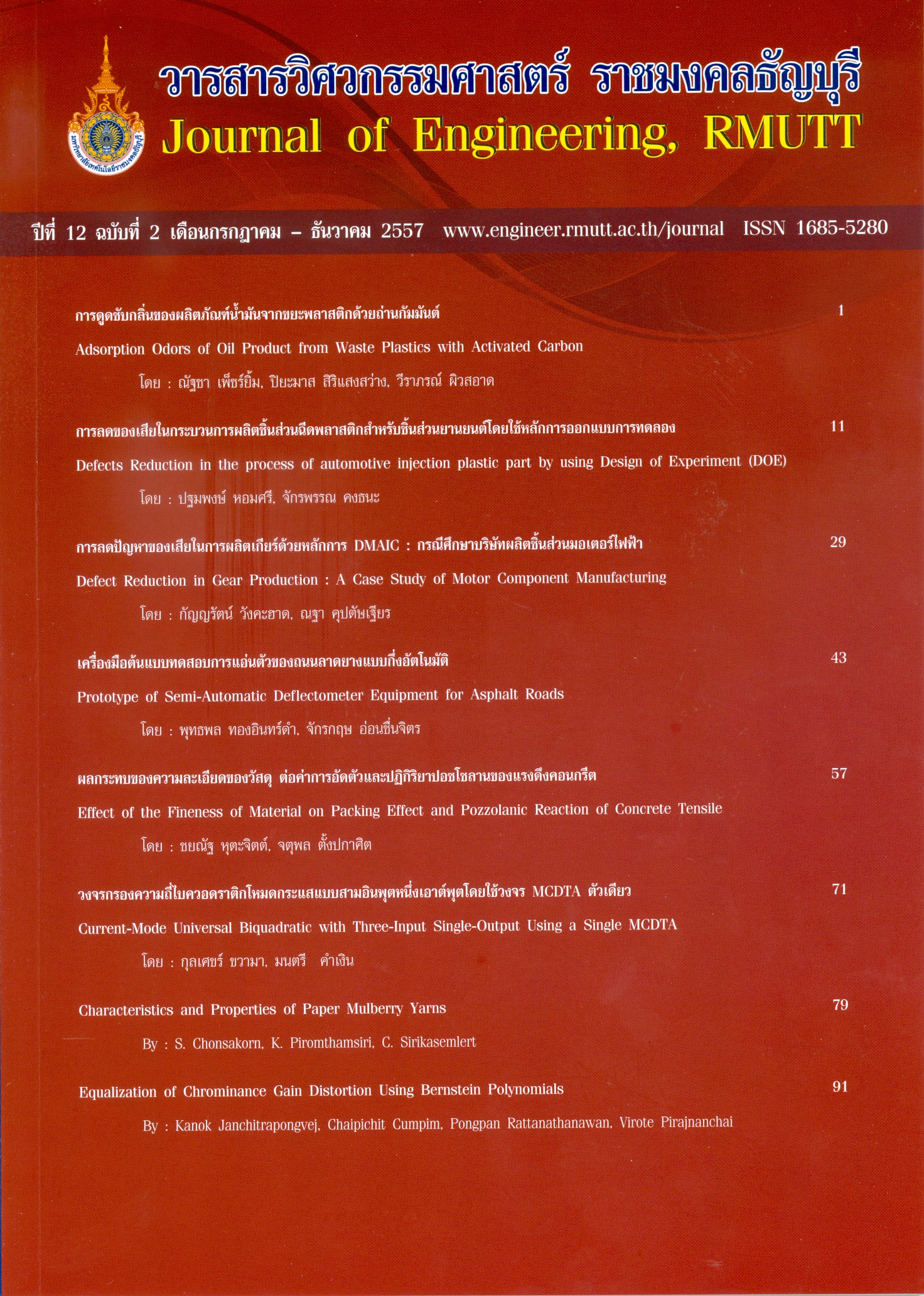Equalization of Chrominance Gain Distortion Using Bernstein Polynomials
Main Article Content
Abstract
This paper describes the design of linear chrominance gain slope equalizer for correcting the distortions in the video signal as they pass through the system under test. By the used of Fourier series, it is shown that the linear gain slop equalizer can be used to correct the linear chrominance gain inequality of the color subcarrier frequency at 4.43 MHz. As the results, it is seen that the proposed gain slope equalizer with linear phase characteristic whose amplitude characteristic has a linear rise or a steep drop in the color video frequency region. The approximated transfer function of linear gain slope is based on Bernstein polynomials. In addition, the composite modulated 20T sine squared pulse was chosen to investigate the performance of the proposed gain slope equalizer. Moreover, Mikhailov ‘s criteria for stability test is considered.
Article Details
The manuscript, information, content, picture and so forth which were published on Frontiers in engineering innovation research has been a copyright of this journal only. There is not allow anyone or any organize to duplicate all content or some document for unethical publication.
References
C. A. SIOCOS, "Chrominance-to-Luminance Ratio and Timing Measurements in Color Television",IEEE Trans. On Broadcasting, Vol.BC-14, 1988, pp. 1-4.
P. WOLF, "Modifcation of the Pulse-and-bar Test Signal with Special Reference to Application in Color Television", Journal of the SMPTE, Vol. 75, 1966, pp. 15-19.
K. Janchitrapongvej et al,"Capacitive Double Layers Uniformly Distributed RC Line and Its Applications to Active Filters", IEEE Region 10 International Conference TENCON,Vol. 2, 2000, pp. 23-25.
G. G. Lorentz,"Bernstein polynomials",University of Toronto Press, 1953.
VL. Pekar and R. Prokop;"Stabilization of a Delayed System by a Proportional Controller",
International Journal of Mathematical Models and Methods in Applied Sciences,Vol. 4, Issue 4, 2010, pp. 282-290.


